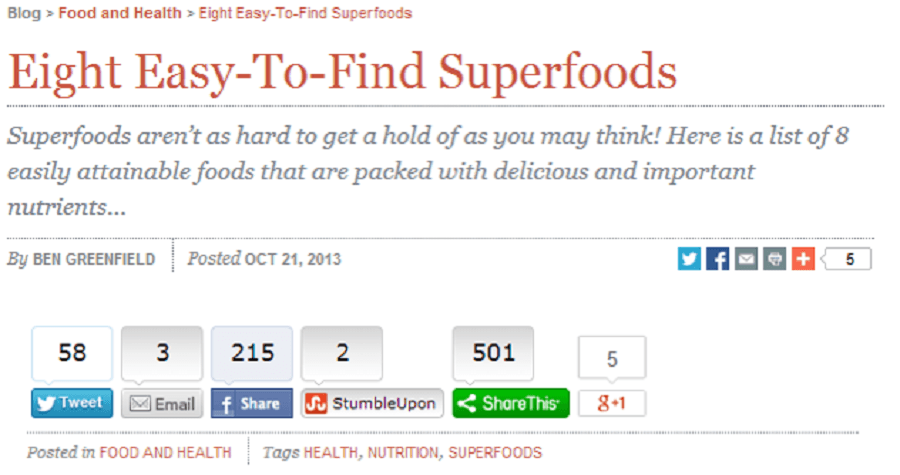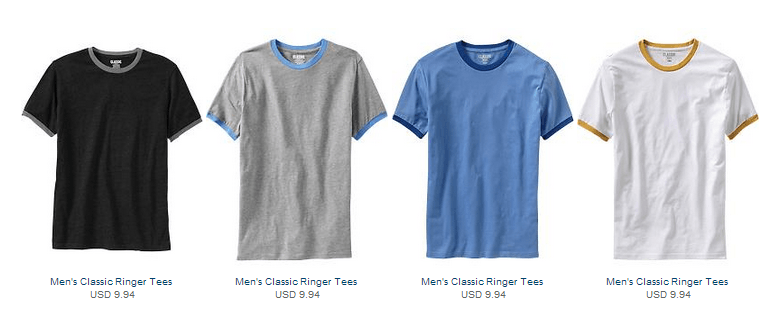
Backlinks
As we discussed in the first post, much of the importance ascribed by search engines to your website comes from backlinks. According to MOZ, Google’s “Page Rank,” named for Google founder Larry Page, is one of the most important factors that search engines look for. The Page Rank is an algorithm used to score websites based on the number and the quality of links which they have linking back to them from around the web. So clearly you want to get some good links back to your website, but the questions is, how do you do that?
No Follow VS Follow Links

Why is there such a thing as no-follow links? Simple, because too many people tried to take advantage of the Page Rank by leaving comments all over the web linking back to their website. Usually these comments were totally irrelevant as well. In order to stop this trend the no-follow link was created. Now most platforms that have the option to leave a comment (blogs, product reviews, etc.) are designed to make any link posted a no-follow link.
So, if your plan for getting backlinks is to just post your website’s URL in as many places as you can, sorry to say, but you are going to need to think of something better…or you can keep reading, and I will give you some actionable tips for how to get backlinks.
Content
The most important part of any website is the content; after all, why did you make your website in the first place if not to fill it with your own unique content? Content can be written articles, but it can also be products, pictures, or any other form of information. The point is, there should be something on your website that will catch your potential customer’s interest.
There are a few things that you can do to achieve this. Keep adding new products to your eCommerce store to make sure that your customers stay interested and keep coming back.
Another great way to improve the content of your website is to start a blog. Every eCommerce store has its own niche. Find your niche audience, and write articles just for them in order to become an authoritative voice in your field. This way people will visit your site, not just for your products, but also to learn from you.
Let’s take a look at an example. EarthEasy.com is a web store which sells eco-friendly products. They could have stopped there, leaving their store as just that—a store. Instead they took the extra step and made their store into something more by writing a blog and providing guides for all sorts of environmentally related topics. They transformed their web store into a cultural center for their target customers, and by doing so they were able to spread their website’s name across the internet.

Social Sharing
Almost as much as they like quality content, people like to share quality content. That is great news for you, because social shares count as great backlinks to your website. As you can see from the Earth Easy example, just one blog post can be shared across multiple platforms giving your website new backlinks every time.
That being the case, you should obviously make everything on your website socially shareable. Have social share buttons on the bottom of every product page and blog post. These shares are free and simple ways of getting backlinks to your site.
Aside from just adding a social share button at the bottom of every product page or blog post, there are many things you can do to make your content shareable:
- Social login and checkout plugins encourage people to be signed in to a social network while shopping at your store. This will lead to more social shares— especially when a purchase is made.
- Social wishlists that can be shared on social networks will show off your products and get you links back to your product pages.
- Social coupons can be given out for all kinds of things. One great way to use them to get backlinks is to encourage your customers to share more of your content by offering them a coupon in exchange for a share.
One thing you definitely want to make sure you make the most of is Google+. Although G+ may seem hard to use, or you may think, “Hey all of my users are probably on Facebook or Twitter, why should I use Google+?” – Don’t think that way! First of all, it is good to be able to share content in more than one place. More importantly than that though is the fact that not all social shares are equal.
MOZ performed a study in which they tried to determine the factors that led to higher search engine rankings for top performing websites. They obviously did not discover the algorithm that the search engines use, but they found a correlation between factors and high ranking sites. The study shows that +1’s on Google+ have the highest correlation to high search engine rankings out of all types of social sharing.

Check out how to make your eCommerce store more social for more suggestions.
Images: the Socially Friendly Content
Obviously informative content and useful products should be the backbone of your website’s content, but you also need to make sure that your content is eye catching – that people will want to share it.
The best way to do this is by using big and colorful images. According to Ipsos, the third largest market and opinion research firm in the world, images account for 43% of all shared content, making them the most popular thing to share on social media networks. The more colorful or interesting your photo is, the more likely it is to be shared.
Something else you can do to spruce up your images is to add text to the image itself, rather than giving it a caption. By doing this you make your point more clearly, and your comment will stay with the picture when it is shared, whereas it may not if you just leave a caption. You can even just include your website name. It doesn’t have to be anything too complicated.
You should strive to add at least one bright picture to each blog post so that your content can be paired with a socially friendly image, encouraging more social shares.
Make Personal Connections
The next, and possibly most obvious way to get backlinks is by making real connections (aka by actually talking to people!). You should try to find other companies in your field, or in related fields, with whom you can start a relationship. By being in contact with the leaders in your industry, it means you are also in contact with the people who probably have the best websites in your industry. Getting a backlink from these sites will show the search engines that you have quality content, because important and relevant sites are linking to you. As you continue building your relationship with them, and continue putting out quality content, it is far more likely that they will share your content on their website, than if they did not know you personally.
Duplicate Content
Duplicate content is probably the most common SEO mistake made by websites. Now to clarify, duplicate content does not mean, for example, that you have to change the way your terms and conditions appear on every page in order to avoid having the same content twice. Obviously something like that would be very difficult to do, and unfair of the search engines to expect of you. What it does mean though, is to avoid having other content (usually keyword stuffed content) repeated across your website. When that kind of content is repeated, then search engines tend to see it as spammy, and that is when you will lose some search engine credit. This is what Google’s Head of Search Spam, Matt Cutts, has to say about it:
The problem search engines have with duplicate content is that it spreads information very thinly. Meaning, the search engine does not know which page is the most important page, and therefore, which page is relevant to search results. As a result of that, a lot of duplicate content both within one website, and spread across different websites, can be very harmful to search engine rankings.
How to Avoid Duplicate Content Problems
There are many things that you can do to minimize the amount of duplicate content on your eCommerce store. The best way to do it is to have this in mind when you are first building your website so that you won’t have to go back later to fix things. Obviously this is not always possible, so let’s look at a few things you can do once your website has already been built.
Don’t Copy Content
First of all, you should never copy directly the product descriptions you get from your supplier (if you have a supplier of course). Always come up with your own descriptions. This will not only avoid duplicate content issues, but will also give your descriptions a little personal flair.
Canonical Tags
You should also avoid having more than one URL lead to the same product or content. Obviously this can be difficult when running an eCommerce store, so there is a way of telling the search engine which URL is the most important one. The way this is accomplished is through the use of “Canonicalization.” In all of your pages of duplicate content, simply add in the Canonical tag pointing back to the “Target” or main URL. This shows the search engines that the content of this page is essentially a copy of the main page which you linked back to.
Take for example this t-shirt from Old Navy that comes in many different colors.
Each of these shirts can be accessed from the main search page, and each one has a different URL. This is the URL of the first one https://oldnavy.gap.com/browse/product.do?cid=98812&vid=1&pid=385799002 and this is the second https://oldnavy.gap.com/browse/product.do?cid=98812&vid=1&pid=385799082. Here you can see the difference. All of these shirts are really the same product though, so how would a search engine know which of these is the main product page?
By taking a look at the page source you can see that all of these products have the canonical tag on them pointing them back to one specific URL.
Now all of these different URL’s point back to the same product page, and that page is the one that is ranked by the search engines.
301 Redirect
Another problem you could run into is if you rewrote some of your URL’s. This means that people will be searching for both the old URL and the new one, which will spread out the SEO benefits. In order to avoid this problem, create a 301 redirect on the old URL. This will make it so that anyone who searches for your old URL, will be sent automatically to the new one. This will also transfer most of the search engine benefits to the new URL.
The difference between a 301 redirect and a canonical tag is that with a 301 redirect your visitors won’t see the old webpage, whereas with canonicalization both web pages still exist.
Website Speed
The last thing we’re going to discuss in this post in the importance of website speed. As we mentioned in the first post, search engines are looking to provide websites that real users will find helpful. People don’t like to wait a long time for their websites to load, so search engines take that into account when ranking websites.
It should be noted that no one is exactly certain what factor of website speed is looked at when the search engines rank websites. For example, the most obvious thing to assume would be that website speed would be measured by how fast your webpages load, but in a study done by Matt Peters in conjunction with Zoompf, they found no correlation between webpage loading time and search rankings. What they did find is a correlation between “Time to First Byte” and search rankings. Time to first byte is the amount of time it takes your browser to receive the first byte of a response when you enter a specific URL. Meaning, how long it takes the browser to get the very first piece of information from your website after a request has been made.
Still, many people disagree with these findings, especially since, starting in 2010, Google has been saying that loading speeds affect search engine results. Either way, speed definitely plays a large role in your site’s bounce back rates — 40% of people will leave a site if it doesn’t load within 3 seconds (KissMetrics). So the best approach for you is to optimize the speed for all aspects of your web store.
Finding Your Page Speeds
Using Google Analytics for your website, you can discover your websites speeds. You can see the average load time by browser and by location. You can also see which of your webpages are loading the slowest. By utilizing this tool you can see exactly where you need to start working on your site speed.
To see your website’s overall speed performance click “Content > Site Speed > Overview,” and to see your individual page’s performance click “Content > Site Speed > Page Timings.”
A Few Speed Boosting Tips
Obviously increasing website speed is a very broad topic, so I just want to leave you with a few tips. For a more in depth look at increasing website speed check out this post from the Crazy Egg blog.
- You should start with the pictures on your website. The pictures are often very large files, which cause slower loading times. By using tools like PicMonkey, Gimp, or Pixlr you can compress images for faster load times.
- Enable caching on your site. A cache is essentially storage space that stores the elements of the webpages that you visit. What this means is that the first time you visit a webpage it will need to load fully, but the second time you visit that page, since much of the webpage’s information was cached, much less information will need to load. By enabling caching, you will increase speed for your return visitors.
- Use Gzip compression to reduce the size of your text file in order to increase speed.
A Look at What’s to Come
Now that we have established a good background, in the next post we’re going to discuss exactly how to apply this information, and how to best optimize all the pages of your eCommerce stores. So stay posted for some more actionable SEO information!
Photo Credit: IstockPhoto.com, FreeDigitalPhotos.net, Master Isolated Images

Zack is a social media enthusiast who loves all things digital. He is the inbound marketing manager at StoreYa where he spends his days searching for the newest social marketing scoop. If you’d like to chat with him, feel free to connect with him on any social platform.
Recommended articles
 Facebook Ads for eCommerce: 16 Strategies, Examples & Tips
Facebook Ads for eCommerce: 16 Strategies, Examples & Tips
 How to Build a Winning eCommerce Ads Strategy
How to Build a Winning eCommerce Ads Strategy
 Google Ads for eCommerce: Everything You Need to Know
Google Ads for eCommerce: Everything You Need to Know
 10X Your Traffic with PPC Management Software
10X Your Traffic with PPC Management Software
Comments
Powered by Facebook Comments





